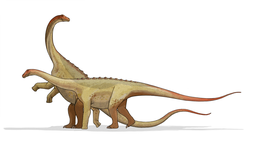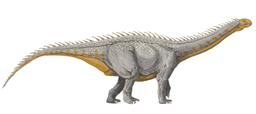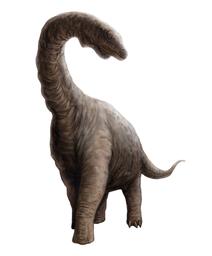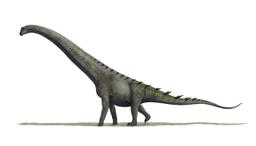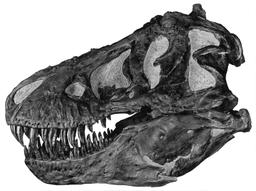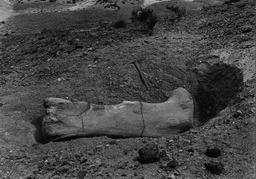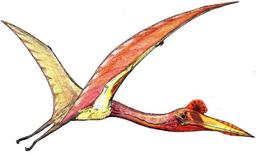Argyrosaurus ( AR-jy-ro-SOR-əs) is a genus of herbivorous titanosaurid dinosaur that lived about 90 million years ago, during the Late Cretaceous Period of what is now Argentina.
Description
Argyrosaurus was a medium-sized sauropod, measuring 17 metres (56 ft) long and weighing up to 12 tonnes (12 long tons; 13 short tons).
It is distinguished from other genera by particularly high and short vertebral arches. Ulna and radius were robust, the metacarpal bones were long as with representatives of the Macronaria. Humerus shows a rectangular upper end, similar to the titanosaurs Saltasaurus and Opisthocoelicaudia. An important feature that confirms the classification within the Titanosauria is a pronounced bone spike at the upper end of ulna.
Discovery and naming
The type species, Argyrosaurus superbus, was formally described by Richard Lydekker in 1893.
The holotype specimen of Argyrosaurus superbus is a huge left forelimb, MLP 77-V-29-1. found at Chico River, a Turonian/Coniacian horizon in the Lago Colhué Huapi Formation.
After this specimen, other remains were found, including other forelimbs, a clavicle, a pubic bone and some tail vertebrae that were referred to the same genus.
Although these numerous other remains have been referred, the holotype remains the only material which unambiguously pertains to the genus.
The genus name means 'silver lizard' from Greek argyros, 'silver', and sauros, 'lizard', because it was discovered in Argentina, which literally means 'silver land'. The specific epithet means "proud" in Latin.
